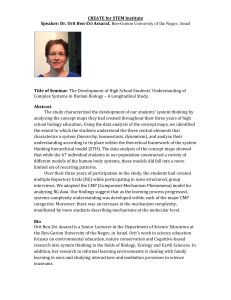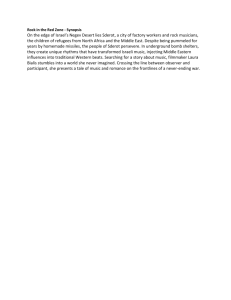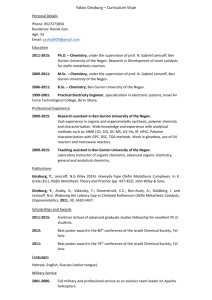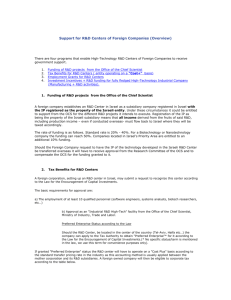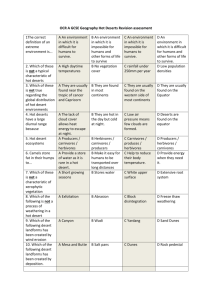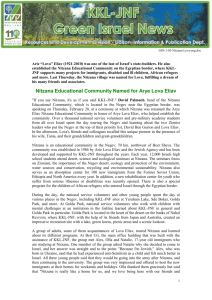Desert and Desertification: Challenges & Opportunities
advertisement
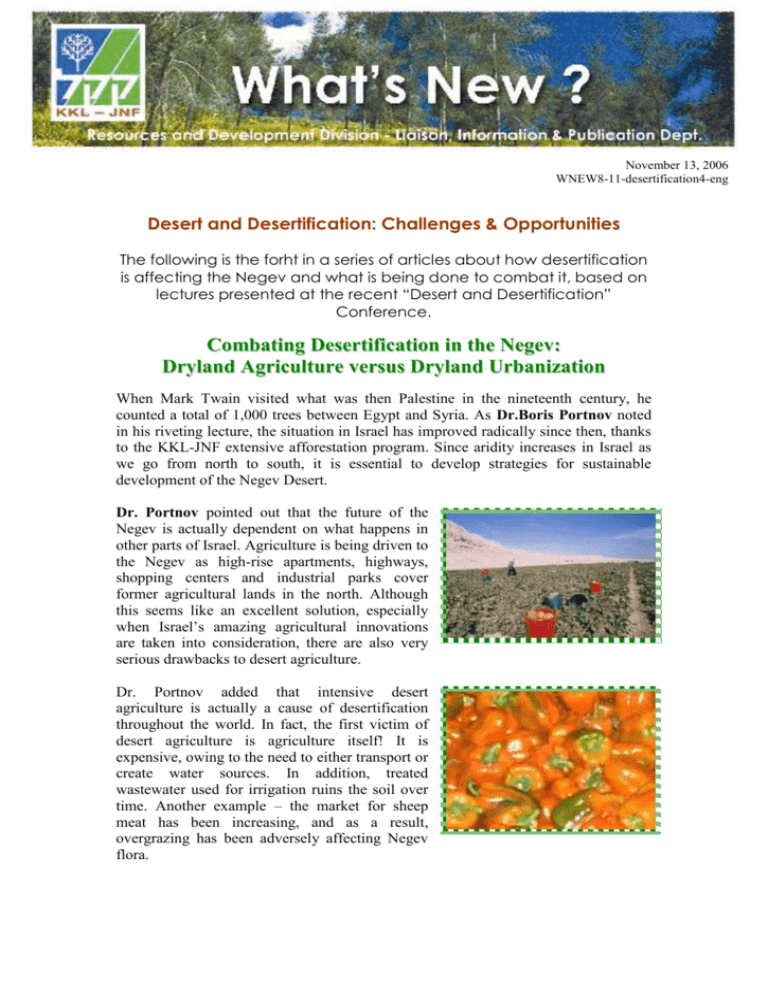
November 13, 2006 WNEW8-11-desertification4-eng Desert and Desertification: Challenges & Opportunities The following is the forht in a series of articles about how desertification is affecting the Negev and what is being done to combat it, based on lectures presented at the recent “Desert and Desertification” Conference. Combating Desertification in the Negev: Dryland Agriculture versus Dryland Urbanization When Mark Twain visited what was then Palestine in the nineteenth century, he counted a total of 1,000 trees between Egypt and Syria. As Dr.Boris Portnov noted in his riveting lecture, the situation in Israel has improved radically since then, thanks to the KKL-JNF extensive afforestation program. Since aridity increases in Israel as we go from north to south, it is essential to develop strategies for sustainable development of the Negev Desert. Dr. Portnov pointed out that the future of the Negev is actually dependent on what happens in other parts of Israel. Agriculture is being driven to the Negev as high-rise apartments, highways, shopping centers and industrial parks cover former agricultural lands in the north. Although this seems like an excellent solution, especially when Israel’s amazing agricultural innovations are taken into consideration, there are also very serious drawbacks to desert agriculture. Dr. Portnov added that intensive desert agriculture is actually a cause of desertification throughout the world. In fact, the first victim of desert agriculture is agriculture itself! It is expensive, owing to the need to either transport or create water sources. In addition, treated wastewater used for irrigation ruins the soil over time. Another example – the market for sheep meat has been increasing, and as a result, overgrazing has been adversely affecting Negev flora. To date, the Negev has not been heavily affected by desertification but in order to prevent future damage to the region’s delicate ecosystems, Dr. Portnov suggested a total reversal in future government planning. Urban expansion should be directed to the Negev by making living conditions there attractive to potential residents. The advantages are obvious – water is scarce in the Negev and urban centers use only twothirds as much water as agricultural lands. The lands in Israel’s northern and central regions are naturally richer and as a result, agriculture there is economically viable. In order for desert urbanization to become a reality, there has to be a critical mass of urban population that ensures optimal conditions for residents. An efficient railway system must be built to facilitate transportation between the Negev urban centers and between the Negev and central Israel. Urban architecture must be designed to be climate responsive. In general, quality of living in the Negev must be made attractive so that it can serve as a magnet that will encourage people to make their homes there. How Global Warming affects Desert Cities: The Cases of Eilat and Beersheba Dr. Oded Potchter introduced us to the concept of the “urban heat island” (UHI) which is a means of defining how global warming affects temperatures in cities. Studies have shown that the effects of global warming are most pronounced on northern cities, such as those of North America, and less so on tropical cities. Very little research has been done on cities in arid zones, which was the subject of Dr. Potchter’s lecture. In order to measure UHIs in the two Negev desert cities of Beersheba and Eilat, 45 points of measurement were chosen in Eilat and 60 in the larger city of Beersheba. The fact that Eilat is located on the shores of the Red Sea had a moderating effect on the development of UHIs in that city. In both cities, it was found that the temperature increase over the past few years exceeded that which would be caused by global warming alone. The effect is most pronounced in Beersheba at dawn during both winter and summer. In Eilat, the effect is stronger at midday. Beersheba has a higher UHI than Eilat and both cities have higher UHI than other desert cities that have been studied. For Articles, comments or use please contact Ahuva Bar-Lev KKL-JNF – Information and Publications Email: ahuvab@kkl.org.il Phone: 972-2-6583354 Fax:972-2-6583493 www.kkl.org.il
